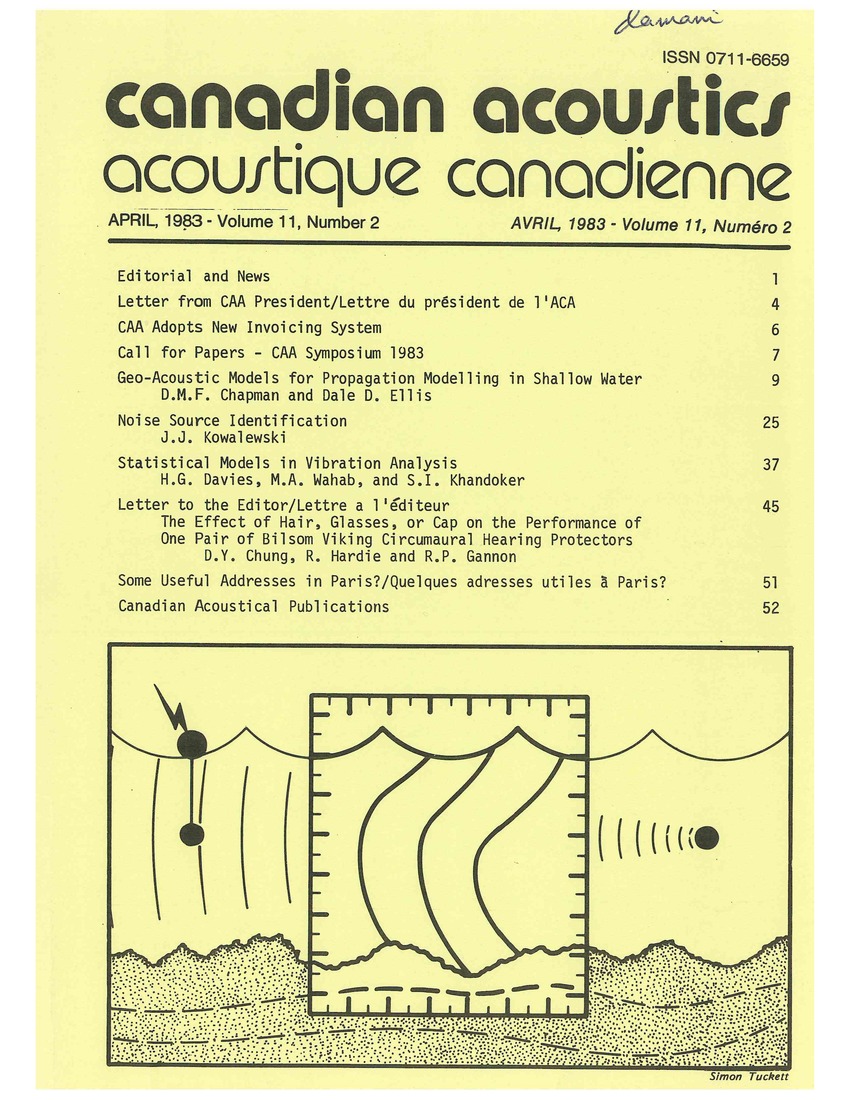Geo-acoustic models for propagation modelling in shallow water
Keywords:
acoustic wave propagation, physics computing, seismic waves, underwater sound, geoacoustic models, acoustic propagation, guided wave phenomenon, subkilohertz frequencies, propagation modelling, shallow water, sea surface, seabed, computer modelling, sound speed, density, attenuation, layer thicknesses, sub bottom vertical reflection profiles, sediment types, seismic refraction experiments, Scotian Shelf, English ChannelAbstract
Acoustic propagation in shallow water is viewed as a guided-wave phenomenon, with the sea surface and seabed forming the boundaries. At sub-kilohertz frequencies, the acoustic properties of the seabed to a depth of several wavelengths can have a strong effect on propagation. The computer modelling of propagation requires estimates of such parameters as sound speed, density, attenuation, and layer thicknesses, which are collectively called the geo-acoustic model of the seabed. Direct measurement of these quantities is difficult, and methods must be devised to infer these values from other experiments, often employing acoustic techniques. At DREA, the authors have adopted the approach of independently determining as many geo-acoustic parameters as possible, and adjusting the less precisely known parameters within reasonable limits to effect an agreement between theory and experiment. To this end, they have used sub bottom vertical reflection profiles to determine sediment types and thicknesses, large and small scale seismic refraction experiments to estimate sound speeds, and processing of sub-bottom reflection data to estimate volume attenuation. Examples of geo-acoustic models and comparisons with experiment are presented for shallow water sites on the Scotian Shelf and the southwestern approaches to the English ChannelAdditional Files
Published
How to Cite
Issue
Section
License
Author Licensing Addendum
This Licensing Addendum ("Addendum") is entered into between the undersigned Author(s) and Canadian Acoustics journal published by the Canadian Acoustical Association (hereinafter referred to as the "Publisher"). The Author(s) and the Publisher agree as follows:
-
Retained Rights: The Author(s) retain(s) the following rights:
- The right to reproduce, distribute, and publicly display the Work on the Author's personal website or the website of the Author's institution.
- The right to use the Work in the Author's teaching activities and presentations.
- The right to include the Work in a compilation for the Author's personal use, not for sale.
-
Grant of License: The Author(s) grant(s) to the Publisher a worldwide exclusive license to publish, reproduce, distribute, and display the Work in Canadian Acoustics and any other formats and media deemed appropriate by the Publisher.
-
Attribution: The Publisher agrees to include proper attribution to the Author(s) in all publications and reproductions of the Work.
-
No Conflict: This Addendum is intended to be in harmony with, and not in conflict with, the terms and conditions of the original agreement entered into between the Author(s) and the Publisher.
-
Copyright Clause: Copyright on articles is held by the Author(s). The corresponding Author has the right to grant on behalf of all Authors and does grant on behalf of all Authors, a worldwide exclusive license to the Publisher and its licensees in perpetuity, in all forms, formats, and media (whether known now or created in the future), including but not limited to the rights to publish, reproduce, distribute, display, store, translate, create adaptations, reprints, include within collections, and create summaries, extracts, and/or abstracts of the Contribution.


